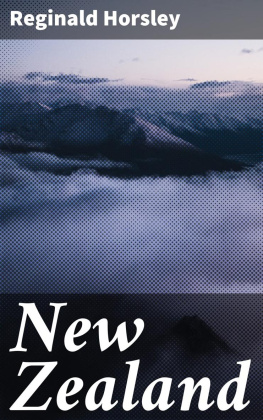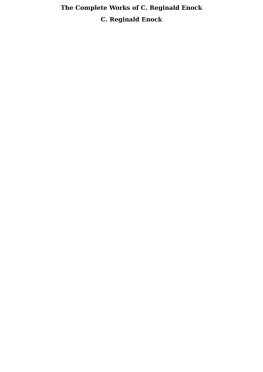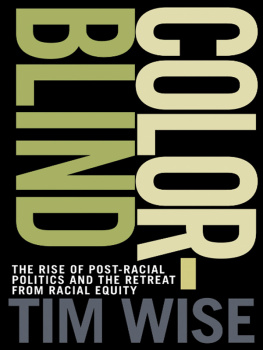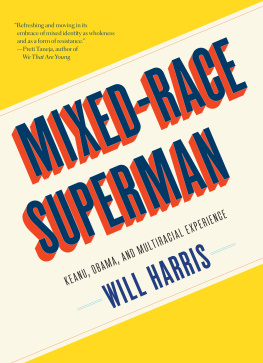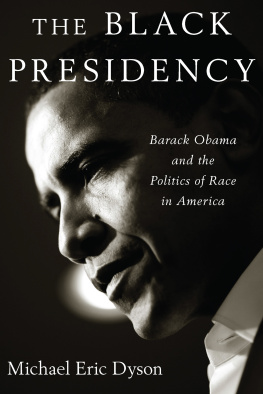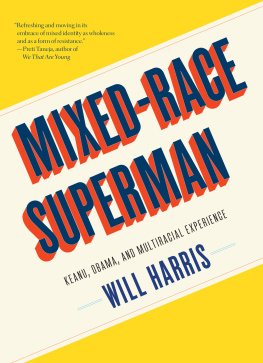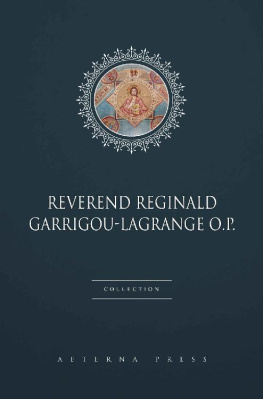RACE AND THE OBAMA PHENOMENON
RACE
AND THE
OBAMA
PHENOMENON
The Vision of a More Perfect Multiracial Union
EDITED BY
G. Reginald Daniel and Hettie V. Williams
www.upress.state.ms.us
The University Press of Mississippi is a member of the Association of American University Presses.
Copyright 2014 by University Press of Mississippi
All rights reserved
Manufactured in the United States of America
First printing 2014
Library of Congress Cataloging-in-Publication Data
Race and the Obama phenomenon : the vision of a more perfect multiracial union / edited by G. Reginald Daniel and Hettie V. Williams.
pages cm
Includes bibliographical references and index.
ISBN 978-1-62846-021-6 (cloth : alk. paper) ISBN 978-1-62846-022-3 (ebook) 1. Obama, BarackInfluence. 2. United StatesRace relations21st century. 3. United StatesPolitics and government2009 4. National characteristics, AmericanHistory21st century. 5. DemocracyUnited States. I. Daniel, G. Reginald, 1949 II. Williams, Hettie V.
E908.3.R33 2014
305.8009730905dc23 | 2014005431 |
British Library Cataloging-in-Publication Data available
CONTENTS
HETTIE V. WILLIAMS AND G. REGINALD DANIEL
DAVID ROEDIGER
GEORGE LIPSITZ
Race and Multiraciality
From Barack Obama to Trayvon Martin
G. REGINALD DANIEL
By Casta, Color Wheel, and Computer Graphics
Visual Representations of Racially Mixed People
GREG CARTER
Barack Obama
Embracing MultiplicityBeing a Catalyst for Change
JANET C. MENDOZA STICKMON
In Pursuit of Self
The Identity of an American President and Cosmopolitanism
HETTIE V. WILLIAMS
TAVIA NYONGO
LISA ANDERSON-LEVY
KARANJA KEITA CARROLL
Obama, the Instability of Color Lines, and the Promise of a Postethnic
Future
DAVID A. HOLLINGER
From Chattel to First Lady
Black Women Moving from the Margins
MARSHA J. TYSON DARLING
The Outsider and the Presidency
Mediated Representations of Race and Gender in the 2008 Presidential
Primaries
TESSA DITONTO
Obamas Unisex Campaign
Masculinities, Race, and Law
FRANK RUDY COOPER
HEIDI ARDIZZONE
Trauma, Compromise, Consilience and the (Im)Possibility of Racial
Reconciliation
DAVID A. FRANK AND MARK LAWRENCE MCPHAIL
Barack Obamas White Appeal and the Perverse Racial Politics of the
PostCivil Rights Era
PAUL STREET
Barack Obamas (Im)Perfect Union
An Analysis of the Strategic Successes and Failures in His Speech on
Race
EBONY UTLEY AND AMY L. HEYSE
PAUL SPICKARD
PREFACE
THE CONCEPT OF A MORE PERFECT UNION IS A CONSTANT THEME IN THE political rhetoric of Barack Obama. This is evident from his now historic race speech to his second victory speech delivered on November 7, 2012. Tonight, more than 200 years after a former colony won the right to determine its own destiny, the task of perfecting our union moves forward, stated the forty-fourth president of the United States upon securing a second term in office following a hard fought political contest. Obama of course borrows this rhetoric from the founding documents of the United States as illustrated in the U.S. Constitution and in Abraham Lincolns Gettysburg Address, delivered in 1863. In this context, the term multiraciality has a dual significance. It is reflected in the trope of a more perfect union that many commentators have argued is directly connected to questions of Obamas mixed-race background as well as his views about the possibility of cross-racial coalition politics and individual transcendence despite race: The idea that if youre willing to work hard, it doesnt matter who you are, or where you come from, or what you look like... whether youre black or white or Hispanic or Asian or Native American, he states in his November 2012 acceptance speech. How naive or realistic is Obamas vision of a more perfect American union that brings together people across racial, class, and political lines? How can this vision of a more inclusive America be actualized in a society that remains racist at its core.
Race and the Obama Phenomenon: The Vision of a More Perfect Multiracial Union examines Obamas administration during the intervening years, while engaging the voices of some of the most preeminent race scholars writing on the topic. The previously published essays were selected for their stellar analyses in helping elucidate some critical aspect of the central theme of the booka more perfect union. Individually, they stand out among the myriad publications on the Obama phenomenon and will remain relevant to any future discussions; combined into an anthology their critical resonance is augmented. We sought to enhance the volume by also soliciting new original essays from race/gender scholars via a call for papers, to which we received many responses.
Although several chapters in the volume discuss the Obama administration as well as aspects of the 2012 election, many chapters cover material specifically related to the 2008 election. We do not believe the value of the book depends, however, on Obamas administration or the outcome of the 2012 election or on any election at all. In fact, the individual contributions in Race and the Obama Phenomenon, as well as the edited volume as a single scholarly contribution, will last beyond the Obama phenomenon. Indeed, 2008 brought to light many issues that have been with us for a very long time and that this volume will help us understand in the future.
The scholars in Race and the Obama Phenomenon interrogate the connection between race, politics, gender, and the Obama phenomenon from multiple disciplinary perspectives. Some of the contributorssuch as G. Reginald Daniel and David A. Hollingerfind Obamas vision of a more perfect union a viable plausibility while otherssuch as David Roediger, Paul Street, and Karanja Keita Carrollare less sanguine about its viability when contemplating race and the Obama phenomenon. In fact, the essays in this collection are seemingly at odds over the meaning of the Obama phenomenon altogether. It was our intention to bring together competing perspectives on race and the Obama phenomenon given the historic significance of Obamas election and re-election. This dialogue surrounding the meaning of the Obama presidency in U.S. history and society remains ongoing and is currently without consensus. Further, we recognize that Obamas political ascendance and presidency in part represents the larger ethno-racial demographic changes that have taken place in U.S. society in the postWorld War II era.
It is important to first situate the Obama phenomenon within the framework of the ever-changing ethno-racial composition of the United States. The cross-racial coalition forged by Obama to twice secure the office of the presidency is only understood through an understanding of what Time magazine labeled in 1993 as the changing face of America. In many respects, the election of the first self-identified African American (with a mixed-race ancestry) to the office of president is reflective of the changing social geography of the U.S. In 1952, the U.S. Congress passed the McCarren-Walter Act, which basically stated that anyone entering the U.S. as an immigrant could apply for citizenship. In 1965, President Lyndon B. Johnson signed into law the Immigration and Nationality Act (or Hart-Celler Act), which abolished national quotas and allowed naturalized citizens to send for relatives. Census data taken between 1965 and 2005 indicate that of the 40 million foreign-born people living in the United States, the majority came from non-Western societies such as China, the Philippines, India, Vietnam, and Mexico.




